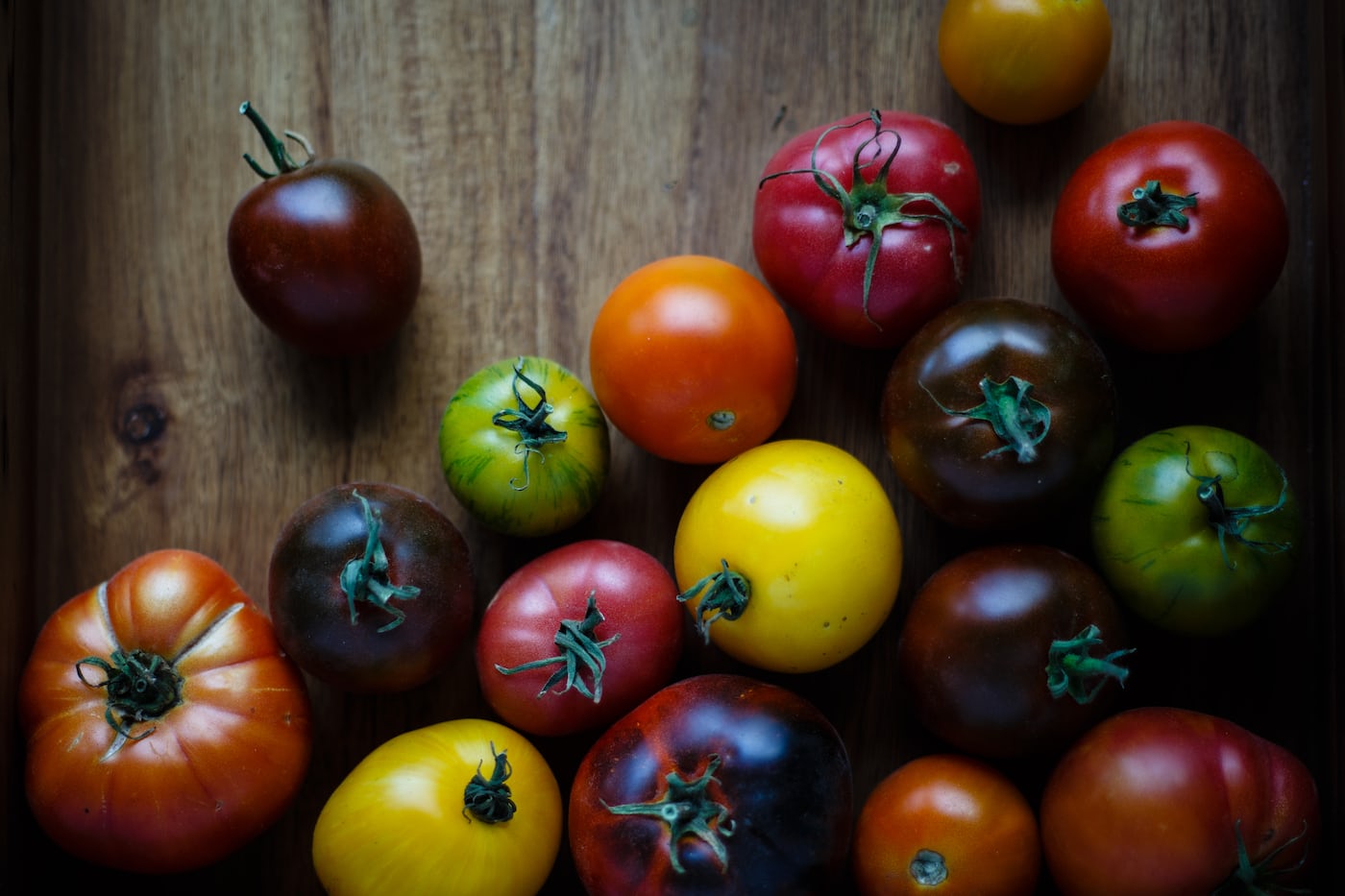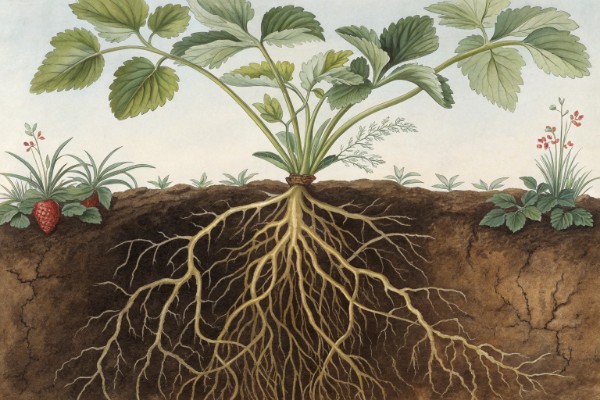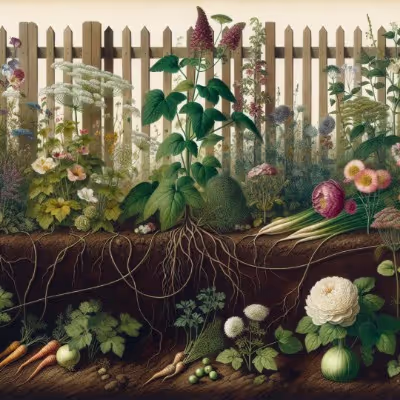Plant Breeding: Cultivating Food Security for the Future

Plant Breeding
Plant breeding shapes tomorrow's harvest—choose vegetable seeds bred for resistance and productivity to boost your garden's yield. Thoughtful plant breeding creates veggies that withstand drought, pests, and disease, securing future meals despite climate uncertainty. Learn how strategic plant breeding strengthens food security, enriches agriculture, and puts fresher produce on your plate.
Cheatsheet: Fast-Track Plant Breeding for Resilient Harvests
🌾 Choose Parent Plants
- Select healthiest, high-yield, pest-tolerant plants
- Prioritize climate adaptability & nutrition
✂️ Cross-Pollinate
- Manual method: Transfer pollen from flower A to stigma B using a brush or cotton swab
- Isolation: Bag or cover blooms to avoid stray pollination
🌱 Grow Out & Select
- Plant resulting seeds and track growth traits
- Mark and save top-performing offspring only
- Repeat up to 6 generations for stable traits
🩺 Focus on Nutrition & Resilience
- Add zinc, iron, or vitamin traits for biofortification
- Select for drought, heat, and pest tolerance (ex. test at 86°F/30°C; dry soil)
📈 Why Breed? (Stats)
- 60% of global calories come from 3 crops; diversify for resilience
- Biofortified crops can reduce anemia by up to 50%
- Improved lines can yield 30%-50% more in harsh years
🛠️ Tools and Products You'll Need
- Fine paintbrushes or cotton swabs (for pollination)
- Mesh bags or organza covers
- Permanent markers & tags
- Record-keeping notebooks or apps
- Shovel, seed trays, irrigation supplies
🥗 Benefits: Health & Self-Sufficiency
- Reduce grocery bills with hardier, home-grown crops
- Custom traits (gluten-free, higher protein, allergen-free)
- Boost food security and nutrition at the local level
Plant Breeding: How Vegetables Shape Our Future Food Supply
Last summer, while inspecting my beloved heirloom tomatoes, I noticed a peculiar vine thriving despite scorching heat (over 100°F or 38°C). Curious, I isolated the plant, saving seeds for further experimentation.
Months later, these hardy offspring flourished even better—revealing the beauty and promise of intentional plant breeding. It's experiments like these that fuel agriculture's silent evolution, keeping both gardeners and farmers ahead of nature's curveballs.
Why Plant Breeding Matters in Gardening and Agriculture
Food security relies heavily upon cultivating resilient, productive vegetables tailored for our shifting climate. Tomatoes that resist blight, kale flourishing despite frost (around 20°F or -6.6°C), carrots thriving in drought conditions—all these arise from deliberate, patient breeding practices.
With unpredictable weather becoming standard fare, developing crops adapted for diverse environments secures our garden harvests and community food supplies alike.
The Basics of Plant Breeding for Gardeners
Plant breeding involves manually selecting and combining plants with exceptional traits, guiding nature's natural variability toward desirable outcomes. Here's the simplified rundown:
- Identify Desired Traits: Disease resistance, heat tolerance, improved yield, flavor or unique characteristics.
- Select Parent Plants: Choosing robust candidates showing those promising qualities.
- Careful Pollination: Manually transferring pollen from one parent plant to another to combine their strengths.
- Seed Collection & Selection: Saving seeds from superior offspring, continuing the cycle each growing season.
My own yard often resembles a vibrant laboratory. I carefully record growth patterns, flavor profiles, and pest resilience.
Year-over-year refinement breeds tougher, tastier greens that require fewer chemical inputs—a win-win situation.
Exploring the Benefits: Why Gardeners Should Try Their Hand at Breeding Vegetables
- Diversity and Adaptability: Breeding unique varieties increases resilience against plant diseases and changing weather.
- Flavor and Nutritional Quality: You can select for better taste, color, texture and higher nutritional content.
- Reduced Chemical Dependency: Breeding hardened plants mitigates disease and pest pressures naturally, lessening environmental impact.
- Community Food Resilience: Sharing successful strains locally fosters stronger food security.
Plant breeding increases crop productivity by approximately 50%, directly contributing to worldwide food security and sustainability. — Food and Agriculture Organization (FAO), 2020 Report
Practical Tips for Amateur Plant Breeding Success
Excited to give plant breeding a try? Here are a few tips from personal experience:
- Always Label Clearly: Tracking parentage ensures greater understanding of results.
- Observe Closely: Careful notes regarding plant health, production, tastes, and reactions to pests help inform decisions.
- Practice Patience: Breeding is a long-term investigation into natural genetics—expect trial, error, surprises, and rewards over many seasons.
- Exchange Ideas and Seeds: Community collaboration significantly amplifies insight and diversity.
The Joy and Responsibility of Breeding Plants
I find nothing more rewarding than harvesting vegetables uniquely adapted to my own garden conditions. Each successful hybrid represents gardeners' active participation toward a more abundant, secure food future.
Every seed saved, every crossbreed carefully monitored contributes meaningfully to humanity's ongoing agricultural narrative. It's a fulfilling, endlessly interesting practice that places each gardener right at the junction between tradition and innovation.

Want smarter plant choices? 🪴
Frequently Asked Questions About Plant Breeding
How does plant breeding support sustainable farming practices?
Plant breeding develops crop varieties resistant to pests, diseases, and environmental stressors such as drought or excessive rainfall. By reducing reliance on chemical inputs and irrigation, these improved crops contribute directly to sustainable agricultural practices and healthier ecosystems.
Can plant breeding improve nutritional quality in vegetables?
Yes, through targeted selection and crossbreeding methods, plant breeding can significantly enhance nutrient density and flavor characteristics in vegetables. Examples include breeding tomatoes rich in antioxidants or carrots with higher beta-carotene content, leading to better human nutrition.
What role does plant breeding play in adapting crops to climate change?
Plant breeding identifies and incorporates traits that enable vegetable crops to withstand changing climate conditions, such as tolerance to temperature fluctuations, drought events, or increased salinity in soils. This adaptation capability safeguards agricultural productivity despite unpredictable weather patterns.
How long does it typically take to develop a new vegetable variety through plant breeding?
Depending on the methods used and the complexity of desired traits, developing a new vegetable variety typically requires between 5 to 15 years. Traditional crossbreeding takes longer, while modern techniques such as marker-assisted selection or genomic editing methods can shorten the timeframe significantly.
Are vegetables developed through plant breeding methods safe and natural?
Yes, vegetables bred using traditional breeding and modern genomic tools maintain natural genetic processes without introducing foreign DNA. Breeders carefully select desirable traits naturally occurring within plant species, ensuring safe, wholesome, and nutritious produce for consumers.
Can home gardeners benefit from plant breeding advancements?
Absolutely. Improved vegetable varieties bred for disease resistance, compact growth, or enhanced productivity readily translate into successful home gardening experiences. Home gardeners can access seeds bred specifically for small gardens, balcony cultivation, or container planting, resulting in reliable yields and quality produce.
What is hybrid plant breeding, and what advantages does it offer?
Hybrid plant breeding involves crossing two genetically distinct parent lines to produce offspring (F1 hybrids) exhibiting improved vigor, productivity, and uniformity. Advantages include higher yields, consistent quality, faster growth rates, and enhanced resistance to diseases or adverse environmental conditions.
How does plant breeding help address global food security challenges?
Plant breeding provides comprehensive solutions for increasing crop yields, improving nutritional profiles, and adapting to environmental stresses. By breeding vegetables suited to diverse climates and conditions, breeders directly support global food availability, affordability, and nutritional adequacy for growing populations.
Plant breeding sits at the heart of feeding tomorrow’s world. Every seed we plant represents a choice—flavor, resilience, and nutrition, all shaped by careful hands and sharp minds. From the fields to your plate, plant breeding means more reliable harvests, tastier meals, and crops that stand tall against changing weather. Want to see this idea in action? Start your own food garden and pay attention to which varieties thrive. If you’re hungry for more, check out gardening classes or flip through a few gardening magazines. The future of food is in our hands—and in the seeds we choose to sow.
Prepper's Guide to Plant Breeding for Long-Term Food Stability
Strategic Variety Selection for Resilience
- Opt for open-pollinated varieties that breed true, allowing seed saving year after year.
- Prioritize seeds with drought-tolerance, pest resistance, and cold-hardiness for future climate shifts.
- Include calorie-dense crops like potatoes, corn, beans, and squash to sustain energy needs through challenging periods.
Essential Plant Breeding Tools and Supplies
- Pollination bags: Prevent unintended cross-pollination between varieties.
- Plant markers and waterproof labels: Maintain accurate documentation of generations and offspring traits.
- Seed drying racks: Ensure proper drying and viability before storage.
- Glass or vacuum-sealed containers: Protect harvested seeds from moisture, pests, and deterioration.
Efficient Seed Storage Practices for Longevity
Store seeds consistently below 40°F (4°C) in dry, dark conditions to extend viability up to 10 years for most vegetables. Include silica gel packets to absorb excess moisture and maintain seed dormancy.
Practical Breeding Techniques for Reliable Harvests
- Perform controlled cross-pollinations manually, ensuring purity and desired traits.
- Regularly select plants demonstrating superior growth rate, productivity, and survival traits; remove weaker specimens promptly.
- Practice rotational planting schedules to reduce disease carryover and soil depletion across breeding generations.
Health and Nutrition Advantages of Targeted Breeding
- Breed for enhanced nutritional profiles, focusing on vitamin-rich vegetables (leafy greens, carrots) and high-protein legumes (beans, peas).
- Select colorful plant varieties (purple sweet potatoes, orange tomatoes, red spinach), improving antioxidant and phytonutrient consumption during extended survival periods.
Sobering Statistics for Consideration
- Approximately 75% of global crop varieties disappeared in the past century due to limited breeding and seed saving.
- Proper seed preservation and deliberate breeding practices help counteract dependency on centralized seed production, securing food sources despite global supply crises.
Find out which plants will thrive in your garden!
Answer a few fun questions and get custom plant recommendations perfect for your space. Let’s grow something amazing together!

start your season





